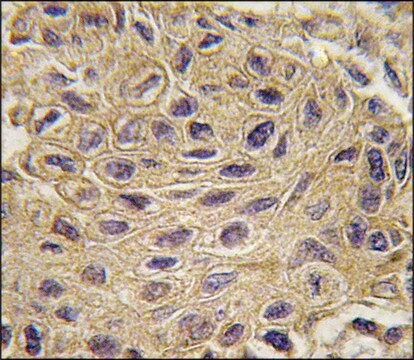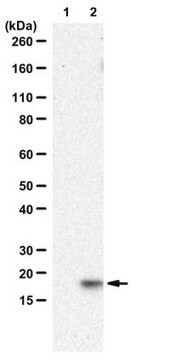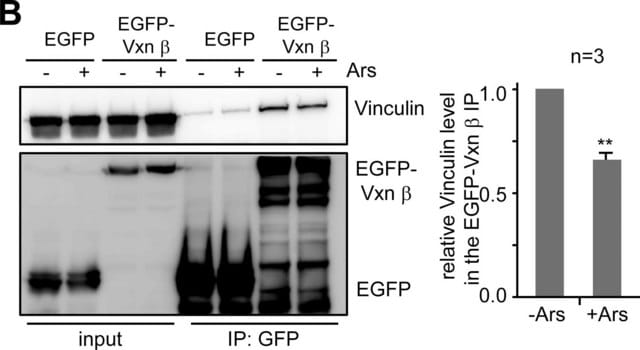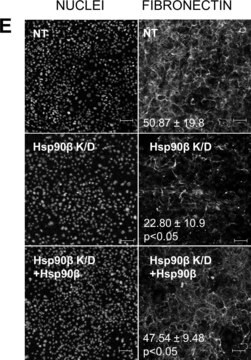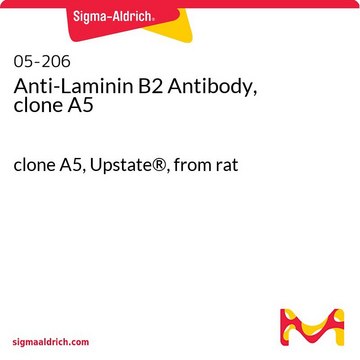ABS1627
Anti-CTGF Antibody, N-Term Antibody
from goat, purified by affinity chromatography
Synonim(y):
Connective tissue growth factor, CCN family member 2, Hypertrophic chondrocyte-specific protein 24, IBP-8, IGF-binding protein 8, IGFBP-8, Insulin-like growth factor-binding protein 8
About This Item
Polecane produkty
pochodzenie biologiczne
goat
Poziom jakości
forma przeciwciała
affinity isolated antibody
rodzaj przeciwciała
primary antibodies
klon
polyclonal
oczyszczone przez
affinity chromatography
reaktywność gatunkowa
human
metody
neutralization: suitable
western blot: suitable
numer dostępu NCBI
numer dostępu UniProt
Warunki transportu
dry ice
docelowa modyfikacja potranslacyjna
unmodified
informacje o genach
human ... CTGF(1490)
Opis ogólny
Specyficzność
Immunogen
Zastosowanie
Signaling
Growth Factors & Receptors
Neutralizing Analysis: A representative lot inhibited CTGF-stimulated collagen synthesis, but not CTGF-stimulated DNA synthesis, in rat kidney (NRK) fibroblasts (Grotendorst, G.R., and Duncan, M.R. (2005). FASEB J. 19(7):729-738).
Note: It is recommended that gel electrophoresis be performed under non-reducing condition to effectively separate CTGF N- and C-terminal fragments, as well as differentially glycosylated N-terminal fragments.
Jakość
Western Blotting Analysis: 2.0 µg/mL of this antibody detected 1 ng of the N-terminal (1-180), but not C-terminal (181-349), fragment derived from baculovirus expressed human CTGF by chymotrypsin cleavage.
Opis wartości docelowych
Postać fizyczna
Przechowywanie i stabilność
Handling Recommendations: Upon receipt and prior to removing the cap, centrifuge the vial and gently mix the solution. Aliquot into microcentrifuge tubes and store at -20°C. Avoid repeated freeze/thaw cycles, which may damage IgG and affect product performance.
Inne uwagi
Oświadczenie o zrzeczeniu się odpowiedzialności
Nie możesz znaleźć właściwego produktu?
Wypróbuj nasz Narzędzie selektora produktów.
polecane
Kod klasy składowania
12 - Non Combustible Liquids
Klasa zagrożenia wodnego (WGK)
WGK 1
Certyfikaty analizy (CoA)
Poszukaj Certyfikaty analizy (CoA), wpisując numer partii/serii produktów. Numery serii i partii można znaleźć na etykiecie produktu po słowach „seria” lub „partia”.
Masz już ten produkt?
Dokumenty związane z niedawno zakupionymi produktami zostały zamieszczone w Bibliotece dokumentów.
Nasz zespół naukowców ma doświadczenie we wszystkich obszarach badań, w tym w naukach przyrodniczych, materiałoznawstwie, syntezie chemicznej, chromatografii, analityce i wielu innych dziedzinach.
Skontaktuj się z zespołem ds. pomocy technicznej